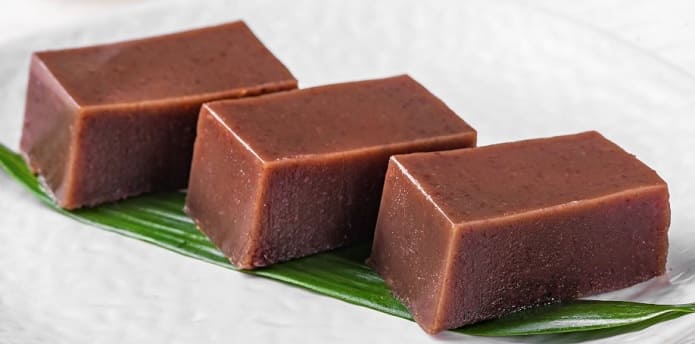Agar-agar is a vegetable gelling agent made from algae that is often used in vegan and vegetarian cuisine. It is also a popular alternative to animal products such as gelatine. You can find more information worth knowing here at a glance.
Agar-Agar: vegan alternative to gelatine
A thickening agent is required to bind liquid foods such as sauces, jelly, or pudding. One of the best-known gelling agents is gelatine, a product made from the bones and connective tissue of animals (particularly pork and beef). Gelatine can also be found in industrially processed foods, including certain sweets, desserts, and yoghurts. But what part of the animal is gelatin made from? You can read about it in our expert knowledge.
For those who want to enjoy without additional animal products, agar-agar is a vegan alternative to gelatine. The vegetable binding agent is a carbohydrate (polysaccharide) that is obtained from the cell walls of algae. Agar-agar has been known for centuries, especially in Japan and China, and is now used for cooking all over the world. This probably goes hand in hand with the trend towards a more sustainable food culture. For more alternatives to gelatin, see Gelatin Substitutes. For example, pectin, a plant-based gelling agent based on polysaccharides that you can even make yourself – for example from leftover apples.
Application of agar-agar: Here’s how!
Agar-agar is dissolved in hot liquid as a powder extract; in the case of gelatine, the cold liquid must first be used to dissolve it. The swelling property of the fibers ensures binding, which occurs very quickly after cooling. If necessary, you can add some locust bean gum to prevent liquid from settling. The end result is fairly tasteless, so agar-agar can be used as a thickening agent for all foods – savory or sweet – it is also ideal for soups, sauces, or cakes.
In most cases, the vegan alternative can replace gelatine as a gelling agent. However, be sure to pay attention to the dosage. The reason: the gelling ability of agar-agar is many times stronger than that of gelatine. The gelling result can therefore vary from liquid to liquid. Instructions for the exact dosage can usually be found on the packaging or in the recipe. With a bit of practice, the changeover works without any problems – just do a gelling test the first time. Have fun trying it out and good luck!



